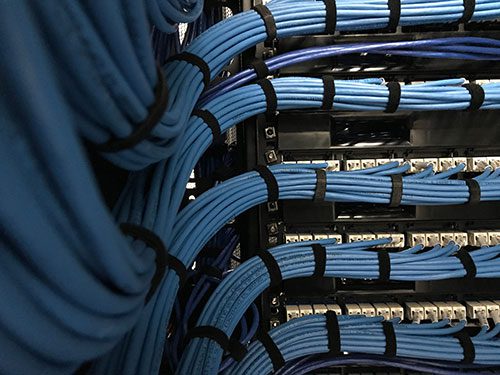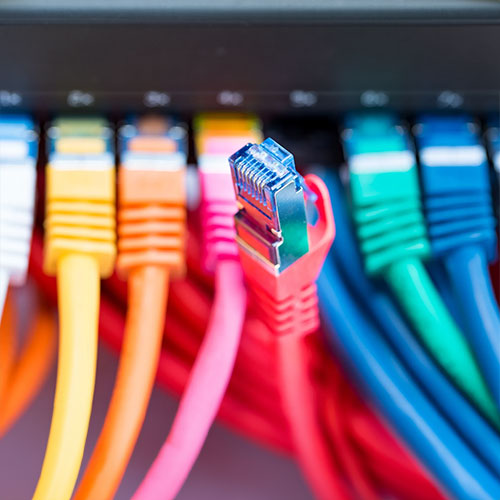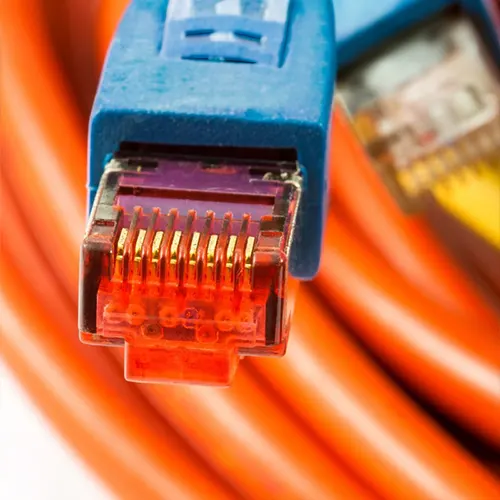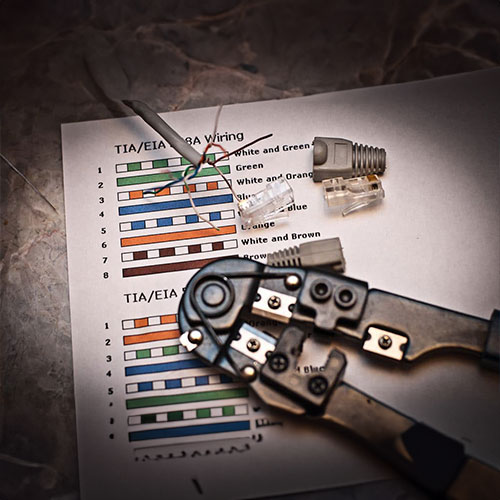"*" indicates required fields
Creating a strong network is crucial when setting up a home office in Philly or starting a tech startup in Newark. Ethernet cables are important, but the terms Cat5e and Cat5 can confuse newbies and experienced tech experts.
Cat5e cable wiring and Cat5 wiring in regions of New Jersey and Pennsylvania play vital roles in network setups for businesses across these regions. Effective cable management ensures optimal performance and connectivity with cables running Cat5e and Cat5. Various places and businesses in New Jersey commonly use these cables. They serve as the primary component of network systems in these areas.
Inserting the wires into an RJ45 connector requires precision when working with Gigabit Ethernet, Cat 5 Cables, Cat 5e, and Category 5 cables. Utilizing twisted pairs and UTP cables for data transmission up to 100 meters, crimping tools are crucial for crossover and straight-through cables. These network cables, capable of 100 MHz frequencies, facilitate fast Ethernet and Power over Ethernet (PoE) in various setups.
This guide explains the differences between Cat5 and Cat5e wiring. It focuses on the differences in New Jersey and Pennsylvania. It aims to help you make informed choices for your network needs.


In this comparison, Cat5e emerges as the superior choice for contemporary digital demands. While both belong to the realm of twisted-pair ethernet cables, Cat5e represents the modern upgrade. Think of it as an evolution from dial-up modems to broadband.
Cat5 has a maximum speed of 10 Mbps. On the other hand, Cat5e is significantly faster with a speed of 1000 Mbps. This makes Cat5e ideal for activities such as streaming, gaming, and video calls.
With improved crosstalk suppression, Cat5e ensures reduced signal interference and a more dependable connection, akin to clearer phone calls on a quiet line.
Cat5e enjoys widespread device suitability, while Cat5 is gradually fading into network history. Opting for Cat5e assures suitability and future-proofing.


Almost always. In some older buildings with low-bandwidth requirements, Cat5e might not be readily available. But, because the cost difference is small and Cat5e is future-proof, it is a smart investment for the long term.
Mastering the Art of Wiring: Connecting Cat5e Like a Pro
For tech-savvy individuals, installing Cat5e on your own is viable. Yet, for those lacking expertise, engaging a qualified network technician is prudent. This ensures flawless installation, mitigating potential issues and hazards.
Cat5e Cable: Opt for high-quality cables from reputable brands as the lifeblood of your network. Skimping here might lead to connection woes.
RJ-45 Connectors: Crimping attaches these small connectors to the ends of the cable. Having spares accounts for those inevitable “oops” moments during practice.
Crimping Tool: Essential for securing connectors to the cable. Select a crimping tool that is compatible with RJ-45 connectors.
Cable Stripper: Handy for removing outer cable jackets, revealing the colorful wires inside.
Cable Tester: Verifies the integrity of your work post-wiring.
Crimping Cat5e: Step-by-Step Guide
Bonus Tip: Avoid sharp bends or kinks in cables, which may damage delicate wires. Neatly route cables along walls or use cable organizers for a tidy setup.

A: The key difference lies in their speed and performance capabilities. Cat5 supports a maximum speed of 10 Mbps, while Cat5e can reach gigabit speeds of 1000 Mbps. Additionally, Cat5e offers improved crosstalk suppression, providing a more reliable connection compared to Cat5.
A: Cat5e is better suited for modern digital needs because of its higher speed capabilities and enhanced crosstalk suppression. Well-suited for applications such as streaming, gaming, and video conferencing. Moreover, most devices widely support Cat5e, making it a more future-proof choice compared to Cat5.
A: If you know about technology and have worked with cables, you can install Cat5e by yourself. If you lack experience, it is advisable to seek assistance from a qualified network technician. This will ensure proper installation and minimize the chances of encountering problems or safety risks.
A: To install Cat5e cables yourself, you will need several tools and materials. You need Cat5e cable, RJ-45 connectors, a crimping tool, a cable stripper, and a cable tester.
Devices connect using the cable, while the connectors secure the cable ends. The crimping tool is necessary to attach the connectors to the cable. You use the cable stripper to remove the outer insulation of the cable.
Lastly, use the cable tester to check the connections and ensure they are working properly. Additionally, having extra connectors and practicing beforehand is advisable.
A: Yes, it’s crucial to avoid sharp bends or kinks in the cable as they can damage the wires inside. To keep things tidy and protect the wires, it’s best to run cables neatly along walls or use cable organizers.